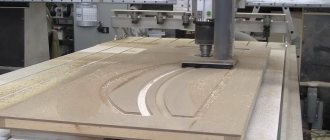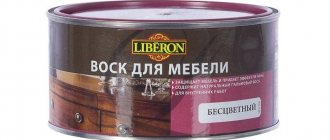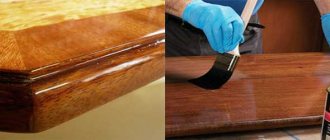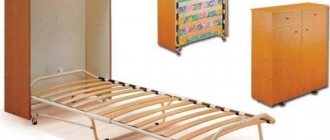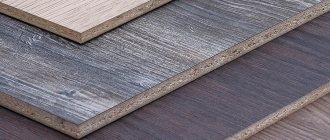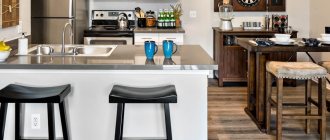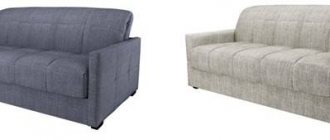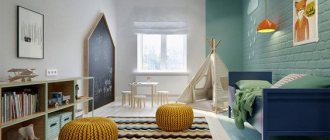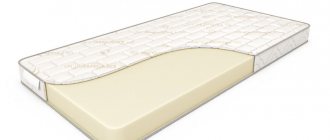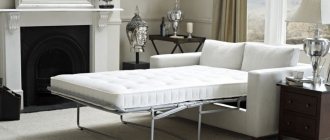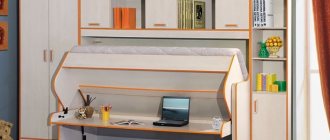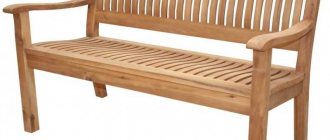Rattan - what is it?
Devil's rope and Spanish cane, calamus and rattan all refer to the rattan palm, which grows in the tropical forests of southwest Asia, primarily in Malaysia and Indonesia. Rattan palm forests are impenetrable because the trees grow close to each other, reaching 300 m in height.
Therefore, rattan is the name given to dried and processed shoots and stems of palm trees.
What is rattan in furniture production:
- this is a material with increased strength;
- the stems are flexible, and after processing they become very plastic, which allows them to be given any shape;
- from long shoots you can create furniture of different sizes;
- The stems are even and smooth, so the furniture turns out beautiful and does not require painting.
Rattan stem structure
The cut stem of calamus clearly shows what rattan is. The three-layer structure ensures the quality of furniture made from it. A rattan stem in cross section looks like this:
- a layer of durable bark;
- middle layer, porous and soft;
- dense core.
The thickness of the rattan stem depends on many conditions, such as climate and weather, and the age of the plant.
Thick stems are used to create the base of a furniture product; braided strips are created from thinner shoots; they cover corners, ends, and joints. The core of the rattan palm is also used: it is split into fibers, woven, and wicker rattan is obtained, suitable for making mats.
Depending on the core structure, thickness and density of the middle layer, rattan is divided into classes.
Definition of rattan class
Experts suggest when purchasing products to pay attention to the class of rattan. Traditionally, the material is divided into 3 classes:
- Class "A" is the best. It includes large, thick stems with a large core and small pores. The cut of the shoots of Class A rattan is light. Furniture products made from top-class rattan have excellent strength, high performance characteristics, and can withstand significant loads for a long time. At the same time, the furniture does not change color, even when outdoors. From the “A” class stems, the highest quality shoots are selected, which are free from the slightest defects, and these are used to make up the premium category.
- Sometimes class “B” rattan is combined with “A” to make the product more affordable. Class “B” calamus stems are less thick, and therefore less durable, the core is not so thick, and the stem is darker when cut. Class “B” is more flexible, but also less able to withstand the load. Therefore, it is used in combination with class “A” as a braid or decorative elements.
- What is Class C rattan? These are even thinner stems with a porous structure that has various natural defects. All this is reflected in the strength and quality of furniture products.
Products made from class “A” and “C” rattan differ in price by 2 times.
Palette of options
You should not consider wicker furniture as some kind of alternative to “classic” furniture. She has her own niche, outside of which rattan crafts look, at least, tasteless.
I recommend: Tips for creating a cozy bedroom
At the same time, often a wicker element added to a seemingly completely incompatible style gives the interior a unique “zest”. Therefore, it will be useful to know the properties and capabilities of such products.
The more types of furnishings we are familiar with, the richer our aesthetic sense, the wider the design “palette”.
Leave your tips and comments below. Subscribe to our newsletter. Good luck to you and good luck to your family!
How is rattan processed?
At the first stage, the stems of the calamus are cut off, the leaves and bark are removed from them.
Then the shoots are standardized, trimmed to the same length and selected by diameter.
At the next stage, the rattan is disinfected and steamed, after which the stems become plastic, easy to weave and durable. The shoots are placed in templates, where they dry, acquiring the desired shape.
A rattan product is coated with a protective compound to ensure that the natural level of humidity is maintained.
Color range of natural rattan
Natural rattan has a natural pleasant color, so it is not painted, but treated with vegetable coloring components. Rattan comes in 4 warm shades:
- olive;
- cognac;
- coffee;
- honey
In order not to damage the natural color and integrity of the surface layer of the stem, rattan products are coated with a translucent varnish that creates a protective film.
If the furniture is painted black or brown, you should take a closer look - most likely, various defects in the stems are hidden under the dark paint.
Rattan color, is there white rattan?
When preparing rattan for the production of furniture items, it is painted in 4 main colors: honey, olive, cognac and coffee. Occasionally, colored rattan is made (black, red, white, etc.).
The palm trunk itself is almost white before processing. Before painting, the trunks are classified for evenness, structure, and the presence of flaws. The highest quality trunks are usually painted a honey color.
Technology for dyeing rattan in golden honey color:
- the trunks are varnished twice with a certain period of time;
- processing is carried out using liquid glass to impart strength and increase moisture resistance, the glass impregnates all cracks and closes them;
- treatment with hydrogen peroxide to give a pure white color;
- The final stage is varnishing, which gives the material a honey tint.
Lower quality trunks are painted using a simpler method: after a single varnish coating, they are painted with the desired paint. Only natural dyes are used that are harmless to human health.
Thus, white rattan is a material that is not treated with paint, but furniture of this color looks very stylish and beautiful.
Natural and artificial rattan
Natural rattan has been used to create furniture since time immemorial. Artificial rattan appeared at the end of the last century. It is produced in 3 types:
- strips of various textures 4-12 mm thick;
- round rods 2-4 mm thick;
- fibers imitating tree bark, 4-12 mm thick.
Artificial rattan is produced using various technologies from cellulose, polyvinyl chloride or polypropylene, adding rubber, synthetic, silk or reinforced threads for strength and ductility.
Artificial rattan has its advantages, namely:
- the rods in the product are always equally even in thickness;
- the material does not have natural defects (spikes, roughness, abrasions, thickening);
- perfect color;
- the weaving is smooth and even.
In addition, furniture made from artificial rattan is much cheaper and there are many more different options for such furniture products on sale.
Rattan furniture in the interior
More than half of the wicker furniture products sold on the Russian market are rattan furniture. Where wicker furniture looks appropriate:
- in stylish cafes and restaurants;
- on a dacha or cottage plot;
- in the winter garden;
- in saunas, baths, spa complexes;
- in the kitchen;
- in the hall;
- bedroom;
- recreation area.
Furniture made from artificial rattan, like furniture made from natural rattan, has become not just a utilitarian object, but is turning into high art, embodying bold design ideas. Thus, well-known Spanish and Italian companies Rattan Deco, Gabar, Rattan Wood, Bonacina, Roberti Rattan and others create furniture-art objects using textiles, glass, metal, and various wood species.
Therefore, today the presence of artificial rattan or real rattan furniture in the living room or bedroom is a sign of good taste and availability of finances.
How to combine with the interior
To make an interior with rattan furniture more cozy, you can use pillows and furniture covers. The color of the textile can be variegated or restrained, but it should not repeat the color of the vine. Preference is given to natural materials such as cotton, linen, calico, and burlap. In a room with a rattan set, the presence of curtains is mandatory; it is also worth using pots with indoor flowers, palm trees, and small trees.
Rattan goes well with glass, wood or leather elements in the set . Wicker chairs are placed next to fabric floor lamps. The walls can be finished with natural stone, decorative plaster, tiles or wood. The floor is covered with light or dark laminate, and a soft fleecy carpet is placed near the chairs.
Features of birch furniture, its main advantages
You should not combine classic rattan furniture sets with “animal” prints and geometric patterns. The colors in the room should match the natural tone of the vine or shade it. You cannot use acidic shades, red, cherry, purple tones.
White rattan furniture is suitable for a country house with light walls and other interior elements made in a similar palette. Black or gray will perfectly highlight a monochrome design in a minimalist style. The aged set is combined with other furniture in olive, beige, dirty pink colors.
If the rattan set is planned to be placed in the house, the most illuminated area is selected: by the window, on the terrace or balcony. A floor lamp, small bedside tables or a coffee table are placed next to the armchairs and sofa. You can choose a wicker chest of drawers on which to place family photos or pots of flowers.
For a small apartment, you should choose natural wicker with dense weaving.
Types of wicker rattan furniture
Asian craftsmen weave all kinds of furniture designs from rattan, which vary in composition.
Furniture can be made entirely of rattan (a frame of thick stems braided with thin branches).
An option is possible when the frame is made of wood and decorated with rattan weaving.
Finally, some designs use:
- cane;
- plywood;
- metal;
- chipboard;
- plastic;
- Textile elements (pillows, bolsters, mattresses) are created for seating.
When purchasing a combination product, you must carefully examine all the details. If the joints and corners are poorly covered with braid, there is a risk that the furniture will fall apart very quickly. If some of the rattan rods are replaced with reed strands, this is a sign of poor quality of the product.
The following are woven from rattan:
- stools, chairs, armchairs, incl. rocking chairs;
- tables of different sizes and purposes;
- sofas, beds, cradles, chaise lounges;
- cabinets, shelves;
- chests, chests of drawers.
What style is it suitable for?
Many people are sure that wicker furniture looks great in any interior style, but there are style trends in which it is most relevant:
- country - this style trend is characterized by a cozy, romantic atmosphere of a rural house. Wicker chairs, a sofa, table lamps and coffee tables, chests and baskets - all this fits organically into country style. The colors of the furniture will be determined by the ethnic color of the design: for Latin American or African country style, you should prefer olive green, light yellow shades, and for Provence and English country - white, brown, gray tones;
- colonial style - interiors in a similar design solution combine light shades of furniture with carved floral patterns, wicker and twisted details. Chests, baskets, and wicker rattan tables are suitable for the colonial style;
- eco style - the main advantages of rattan perfectly suit the eco style, which is characterized by the use of exclusively natural materials.
Colonial
Eco style
Country
Features of the use of rattan furniture
If you take into account that rattan furniture has specific operating, storage and care features, like any other furniture, and carefully observe them, then the products will delight you for many years.
How to use it correctly:
- Do not leave in the rain or hot sun.
- Do not place close to open fire.
- Rattan can be accidentally cut or scratched by sharp objects.
- Do not put your feet on the seats.
- Do not exceed the permissible weight load.
Iconic models
The range of wicker rattan furniture is varied, however, there are several iconic models made from this raw material. Manufacturers actively include them in almost every garden or living room set, and users are happy to take the chairs for relaxation in the fresh air or place them by the fireplace.
- Cocoon chair. The model looks like a round or oval hemisphere. The structure is suspended by a chain on a metal hook, and a stable footrest is provided. If the house has a strong ceiling, the “drop” can be attached to it. For comfort, a soft mattress or several pillows are placed inside. A person sitting in a cocoon can easily swing without fear of turning over.
- Papasan. A rounded low chair on a stable base is often used in home interiors. A rotating structure is offered for the garden. The chair can accommodate several people and serve as a place for relaxation and napping.
- Mamasan. An armchair with a round base, armrests, and a high headboard can accommodate several people. The model can replace a bulky sofa or sofa. The most commonly used type of furniture is rattan for the terrace.
- Rocking chair. The model has armrests, a high back, and a curved base, due to which the furniture structure begins to move. Comfortable back support follows the curves of the body, making rest in the chair as comfortable as possible.
Advantages and features of carved furniture, methods of decoration
The listed models are made from natural or artificial materials. For the garden, it is recommended to choose a more practical poly rattan that better withstands sudden changes in weather. Indoors, you can complement the chairs with soft covers and pillows.
Cocoon chair
Papasan
mamasan
Rocking chair
